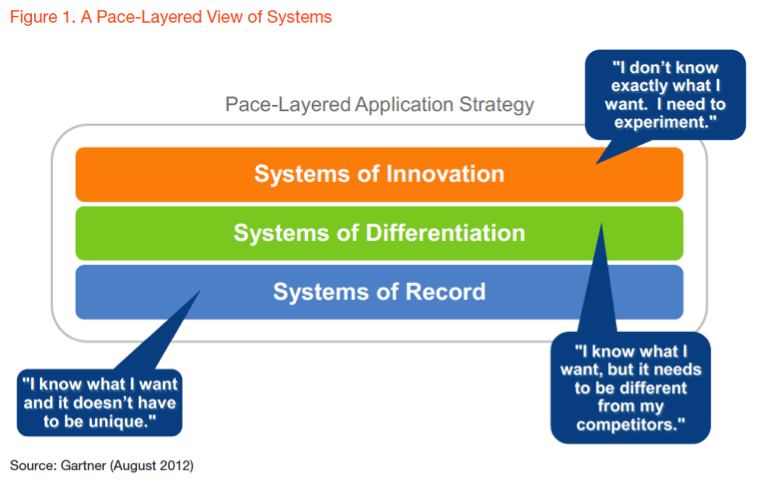
A better way to select business software? Gartner says yes!
11 oktober 2013
Buying a (new) house is what most people do at a certain point in your life.
Because you want to start a family, or you don’t want to live in the rented one anymore, or you changed your job and want to move to something bigger – all good reasons.
But whatever the reason, the process of buying a house can be done in different ways. Most people will have an idea what they want and need regarding the kind of house, the budget they have and may discuss it with their friends. Some will see some real estate brokers to see what they have to offer.
Still, this is the method that many companies use to select business software; some, say 10 suppliers, are asked to demo their solutions, the 2 best are picked (based on?) and finally select the one with the best offer.
Now, have they chosen the best solution or the best of just those 10 solutions? Or was the vendor best capable of selling the company a problem – which he no doubt could solve best?
Gartner recently developed a new approach to selecting software – based on their thorough analyses of a large number of selection processes, held by companies between 10 and 10.000 employees. This approach is called the ‘Pace Layered Application Strategy’.
The approach is based on 2 determinations;
- Of all business processes applied in a company, max 15 – 20 % are in fact ‘core’ or ‘giving a strategic advantage (towards the competition’)’; you are in business because you do it different than form the competition. The remaining 80 – 85 % are ‘needed, but not business critical (commercially speaking) and for sure not unique’. For most companies business processes like e.g. finance, HR, procurement etc. are surely needed, but in these processes your company is not unique.
- These days, most software packages *) offer, still in their standard vanilla version, already (much) more than enough functionality to run your 80 – 85 % non-core business processes.
*) Software packages for requested functionality on e.g. ERP, CRM, HR, reporting etc.
Based on this, Gartner decided there are in fact 2 types of business processes, requiring a different approach towards the selection of your business software;
- Processes of record, requiring systems of record; your 80 – 85 % of non-core business processes
- Processes of differentiation, requiring systems of differentiation; your 15 – 20 % of core business processes.
In fact they’ve also defined a 3th type of software; systems of innovation which you need to develop yourself because parts of your processes are so unique there is no software available. But this is only applicable for 1 – 2 % of the processes in only a small number of companies.
In a schematic representation;
So, if your company needs (new) business software, the very first step is to define whether your business processes can be defined as processes ‘of record’ or as processes ‘of differentiation’.
This needs a certain amount of healthy criticism regarding your current processes – as most processes seem to be quite different (from standard / record), or are at least presented as such. But in fact ‘your finance’ is in no way different from ‘your competitors finance’.
Once your mindset is based on that healthy critical approach towards your own business processes (and please let some independent business consultants help you with this – they did it in similar businesses already many times), you can work on the normal list of steps as presented below.
But with the Pace Layered approach in mind, you will see that the selection process is much easier. And from experience; the result is a much more successful, much easier to implement, and above all much more cost-effective and future-proof.
Here’s a list of steps to take after finding out that your company needs (new) business software. Many companies may want, and need, an external and independent consulting firm to partner with during this process;
- Define and refine your business processes.
- Assess and prioritize your business requirements.
- What is your current solution lacking?
- Use the business requirements to define the project scope and goals.
- Determine budget (based on users, time-frame, growth, hardware, support).
- Send out RFI (Request for Information) to vendors/suppliers.
- Use vendors feedback on RFI to create a shortlist.
- Set up demo script using organization’s specific data.
- Have shortlist suppliers demo using script.
- Evaluate scripted demo’s and shortlist 2 suppliers.
- Visit suppliers references.
- Proof of Concept phase.
- Fit-Gap analysis.
- Assemble project-team (both external and internal).
- Send out RFP (Request for Pricing) to both shortlist suppliers.
- Contract negotiation (cost, time-frame, training, support).
- Select supplier and start (phased) implementation.
Some organization may need additional or less steps, or a different sequence of steps. Be that as it may, the focus in a business software selection project should be on the organizations processes and needs, rather than on the solution itself.
The solution is merely a tool to support the company’s process; the means to achieve the objective.


2 reacties
Hi Dylan, assuming you're referring to your Tru-Eval method, what is, according to you, the main difference between Gartners and your approach?
2013-10-15 10:47:16 door Jaap Lucas
Gartner has brand recognition. Impartial analyst consulting firms have created their own methodology using he exact same steps. Gartner seems to be following again rather than coming across as thought leadership here.We had a vendor selection methodology in place for over 5 years now. Our business is based on providing the customer with a "percentage of best fit" based on their own requirements.
2013-10-11 23:35:34 door DYLAN PERSAUD